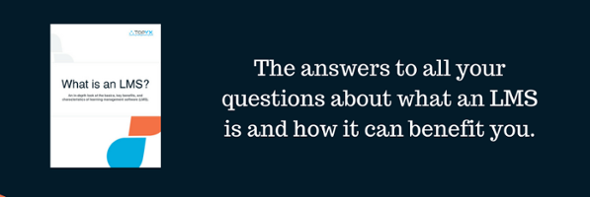Watching high-potential employees consistently struggle with poor performance is not just discouraging to management -- it’s also bad for business. Since top performers help save companies money, boost worker retention and increase employee engagement, company leaders should make it their mission to develop these individuals’ strengths as quickly as possible.¹
“Just one in nine employees say their skills and talents are used to the full potential.” -- InSync Surveys²
5 Tips for Nurturing High-Potential Employees
To meet their highest professional potential, exemplary employees must be supported by management in ways that promote their growth. Here are five tips you can use to help these individuals become more successful at work:
-
Offer positive feedback -- Without receiving feedback, it is difficult for employees to become better at what they do. When an employee feels uncomfortable receiving input, the feedback often goes to waste.³ Being careful to keep feedback positive, emphasizing opportunities and areas to grow, will encourage high-potential employees to put your advice into action.
-
Have regular check-ins -- Feedback is most effective when offered on a regular basis. This is why managers should consistently check in with their soon-to-be star performers. During these check-ins, managers can answer questions, provide practical tips and discuss short- and long-term goals in addition to offering positive feedback.
-
Set goals with employees -- Setting goals for employees is easy. Setting goals with employees takes more effort but gives workers an inside look at your process and objectives. What are you driving at for employees and the business? Having this context better prepares your staff for future leadership roles.
.jpeg?width=600&name=pexels-photo-1056552%20(1).jpeg)
-
Create individualized development plans -- One of the best ways to nurture a high-potential employee is to provide him or her with an individualized development plan that functions as a roadmap to success. Like setting goals, it’s best to build a development plan with an employee.
“Senior leadership, as part of annual strategic planning, determines the human-capital needs that will be required to execute the strategic plan,” wrote a contributor to IndustryWeek.4
-
Provide ongoing training -- Continuous training should be part of a promising employee’s development plan. Offering ongoing training and learning opportunities is a crucial aspect of improving the performance of these individuals.
“Job seekers from entry-level to executive are more concerned with opportunities for learning and development than any other aspect of a prospective job. This makes perfect sense, since continuous learning is a key strategy for crafting a sustainable career,” stated the Harvard Business Review.5
A learning management system (LMS) delivers ongoing, online training that can be customized to meet the needs of individuals who have what it takes to become top performers. Also, by generating detailed reports on an employee’s learning progress, LMS software helps administrators tailor online training programs to improve employee performance.
Related Reading: How LMS Learning Path Functionality Promotes Professional Development.
Are You Turning Your Employees Into Top Performers?
Low employee engagement, high turnover and an increased bottom line are all signs that your employees with the highest potential may not be getting the support they need from management. 7 Help your most talented employees meet their potential by spending a little extra time on their professional development and providing continuous training through an LMS.
“Top employees not only want to survive, they want to thrive, and they will seek out businesses that help them do so.” -- Huffington Post6
References:
1, 7. Emergenetics. Strategies to develop high-potential employees. https://www.emergenetics.com/blog/strategies-develop-high-potential-employees/.
2. InSync Insights. Employee potential not fulfilled. http://www.insyncsurveys.com.au/resources/articles/newsletter/2011/12/employee-potential/.
3. Entrepreneur. 5 steps for giving productive feedback. https://www.entrepreneur.com/article/219437.
4. IndustryWeek. How to develop high-potential employees. http://www.industryweek.com/workforce/how-develop-high-potential-employees
5. Harvard Business Review. If you’re not helping people develop, you’re not management material. https://hbr.org/2014/01/if-youre-not-helping-people-develop-youre-not-management-material?cm_sp=Article-_-Links-_-Comment.
6. Huffington Post. Engage employees by helping them fulfill their sense of purpose. https://www.huffingtonpost.com/michael-friedman-phd/engage-employees-by-helpi_b_8647370.html.






